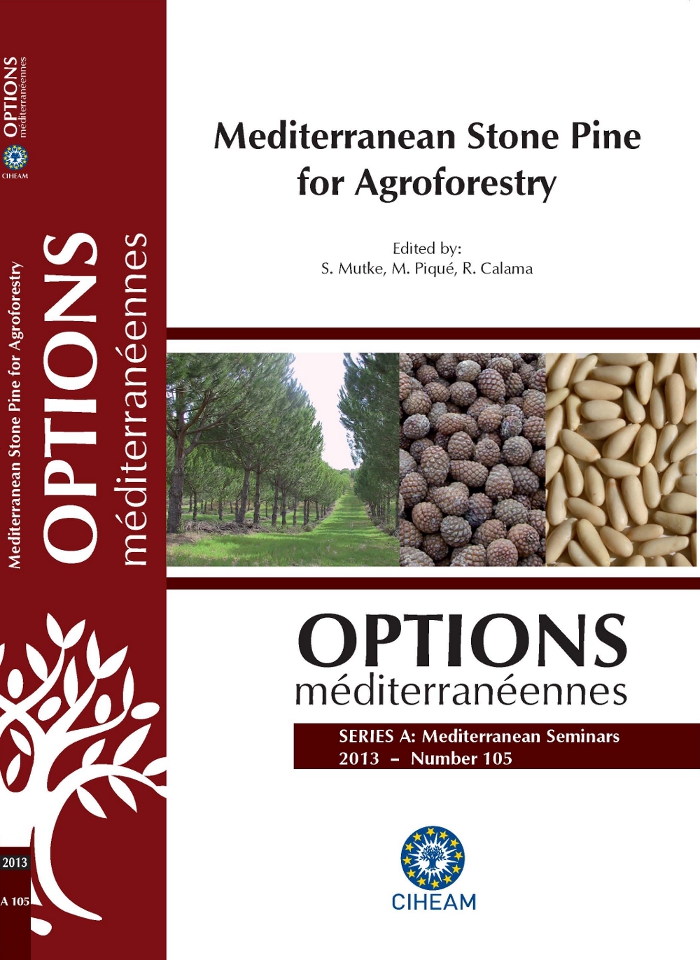| Article précédent | p. 49-55 | Article suivant |
Thinning effect in two young stone pine plantations (Pinus pinea L.) in central southern Chile
In Chile stone pine was introduced more than a century ago, mainly by Italian and Spanish immigrants who brought it as part of their culture; interest for this nut in Chile is recent and has been gradually increasing. Crown development is one of the most important factors on pine nut production because it is influenced mainly by light. In winter 2009 two young P. pinea plantations, 15 and 16 years old, located in central Chile (Casablanca –Valparaíso Region– and Pencahue –Maule region), where thinned in order to evaluate the effect of this intervention. Variables evaluated were DBH, height and crown diameter. With the software ArcGIS 9.2, an analysis of crown area growth was made before and after thinning. Results showed a positive increase in dasometric variables one and two years after the intervention in both situations. A significant increase in tree crown area was found; crowns tend strategically to take advantage of light and space, taking a rounded form, change that would have a significant effect on pine nut production.
Au Chili le pin pignon a été introduit il y a plus d'un siècle, principalement par des immigrants italiens et espagnols qui l'ont amené dans le cadre de leur culture, mais au Chili l'intérêt pour cette noix est récent et progressif. Le développement du houppier est l'un des facteurs ayant le plus d'impact sur la production de pignons, car celle-ci est principalement influencée par la lumière. Pendant l'hiver 2009, deux jeunes plantations de P. pinea, de 15 et 16 ans, situées dans le centre du Chili (Casablanca, région de Valparaíso, et Pencahue, région de Maule), ont été éclaircies afin d'évaluer l'effet de cette intervention. Les variables évaluées sont la hauteur, le diamètre et la projection de la surface du houppier. Plus tard, avec le software ArcGIS 9.2, une analyse de la croissance de la surface du houppier projetée avant et après éclaircie a été réalisée. Le résultat fut une augmentation positive des variables dasométriques un et deux ans après l’intervention dans les deux situations. On a trouvé une augmentation significative de la surface du houppier des arbres, qui tendent de manière stratégique à profiter de la lumière et de l'espace, formant un houppier arrondi, changement qui aurait un effet significatif sur la production de pignons.
- [ Afficher ]
- [ Télécharger ]
- [ Exporter la citation ]
Vous pouvez télécharger la citation au format :
- [ Imprimer ]
-
Mots-clés
AGROFORESTERIE, CHILI, ECLAIRCISSAGE, FACTEUR DE RENDEMENT, HOUPPIER, PINUS PINEA, PLANTATION FORESTIERE, CONECiter cet article
Loewe V., Venegas A., Delard C., González M. Thinning effect in two young stone pine plantations (Pinus pinea L.) in central southern Chile. In : Mutke S. (ed.), Piqué M. (ed.), Calama R. (ed.). Mediterranean stone pine for agroforestry. Zaragoza : CIHEAM / FAO / INIA / IRTA / CESEFOR / CTFC, 2013. p. 49-55. (Options Méditerranéennes : Série A. Séminaires Méditerranéens; n. 105). AGROPINE 2011 International Meeting on Mediterranean Stone Pine for Agroforestery, 2011/11/17-19, Valladolid (Spain). http://om.ciheam.org/om/pdf/a105/00006781.pdf



